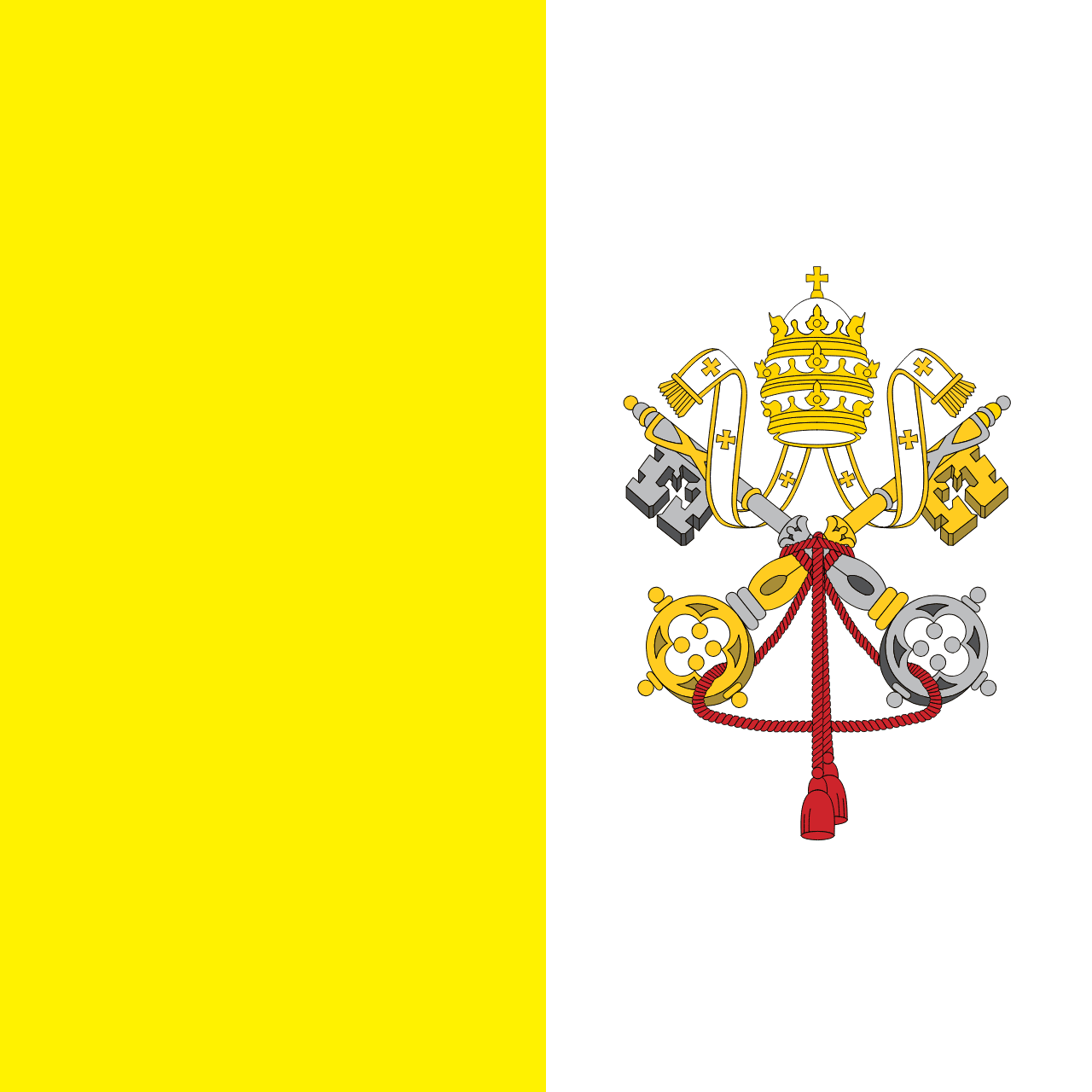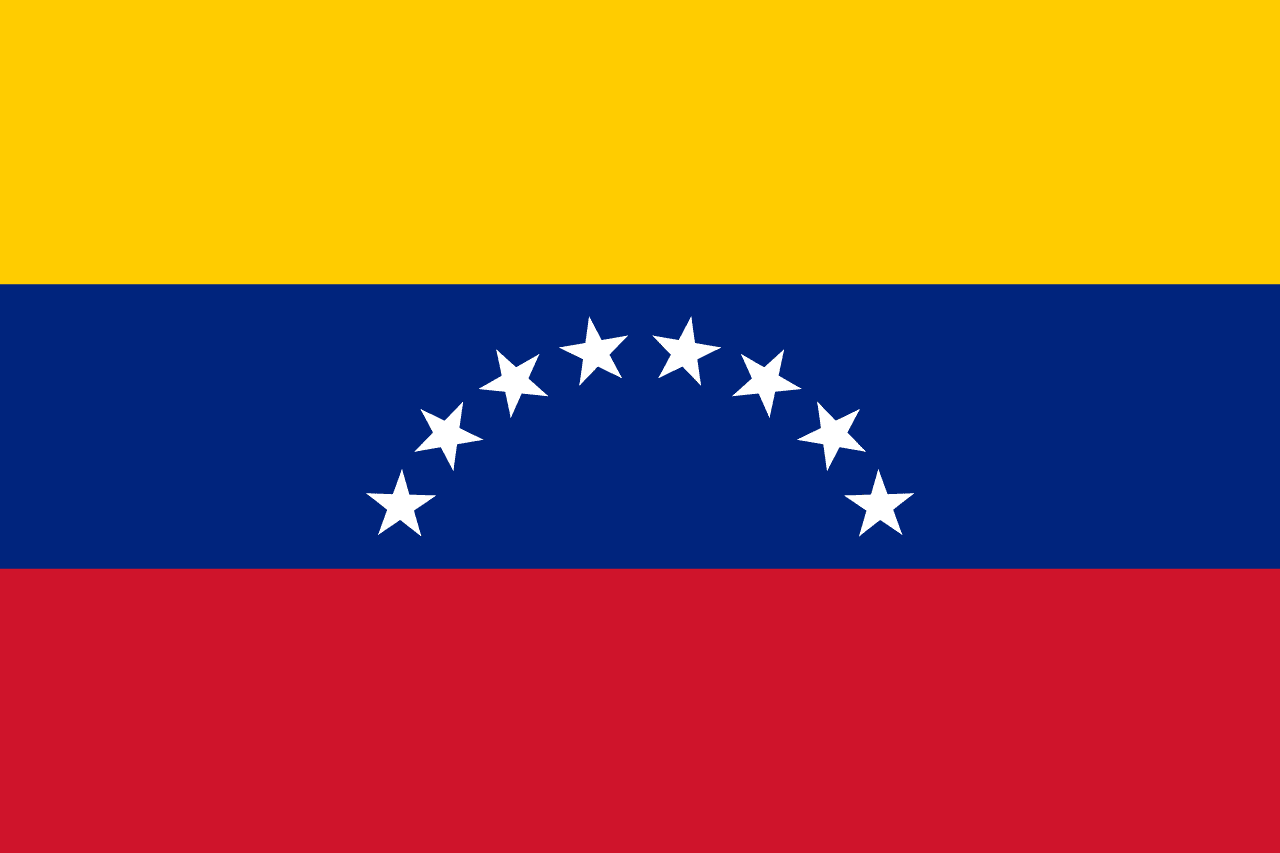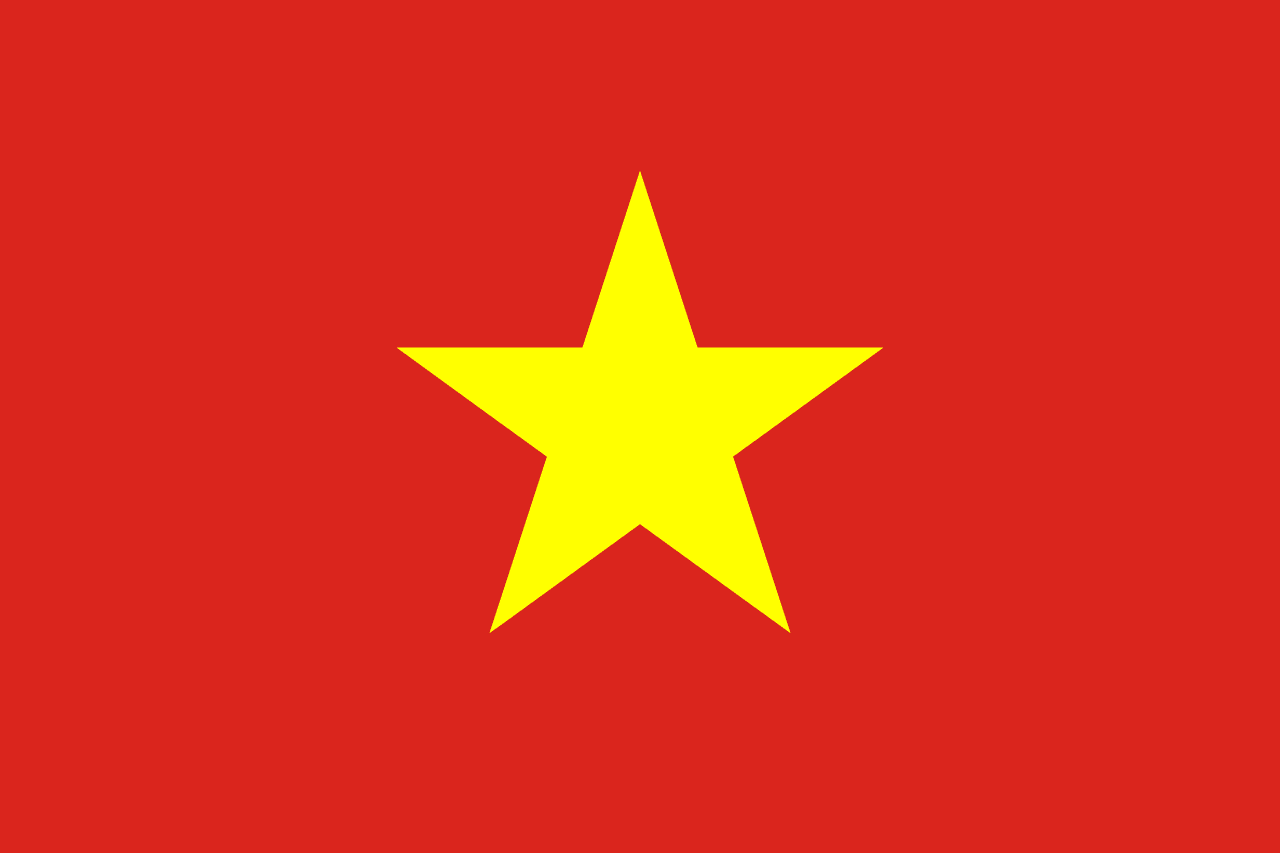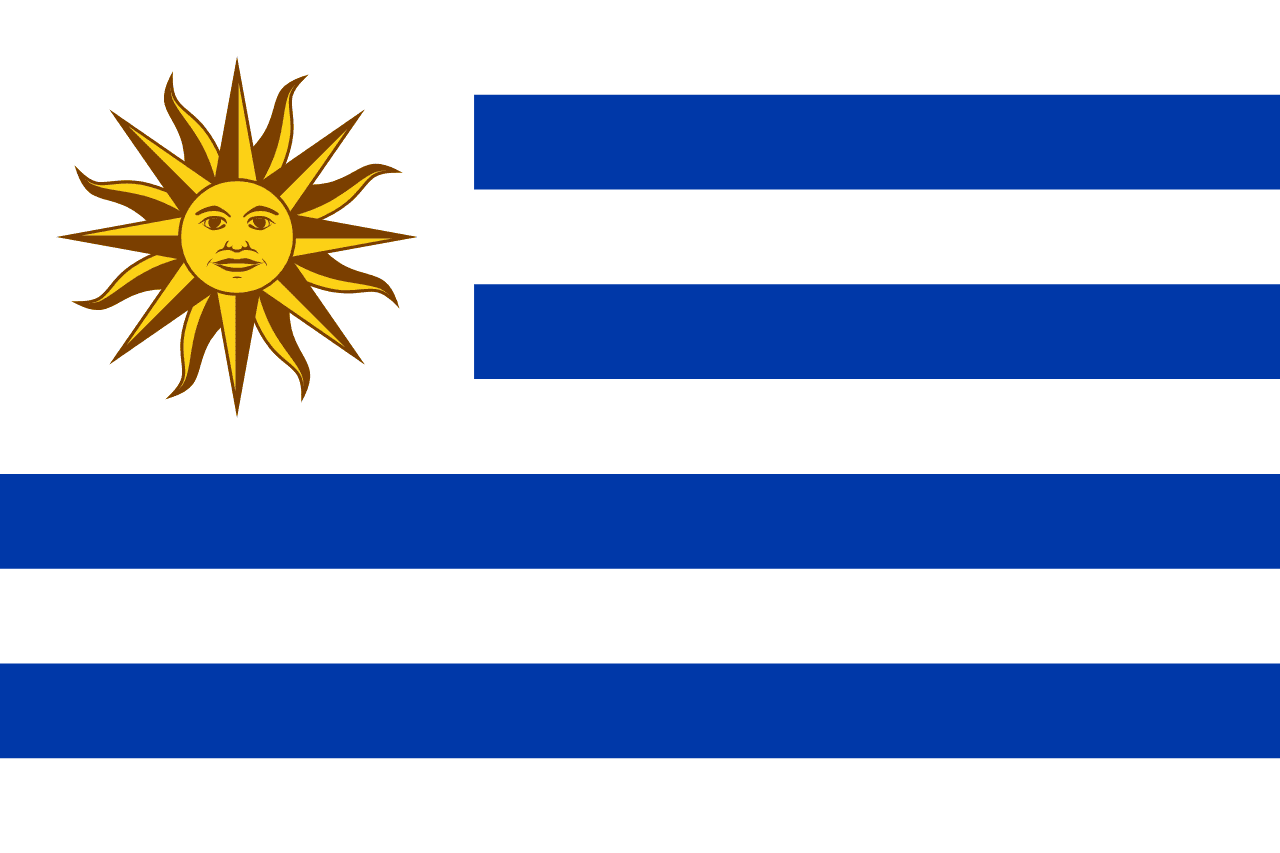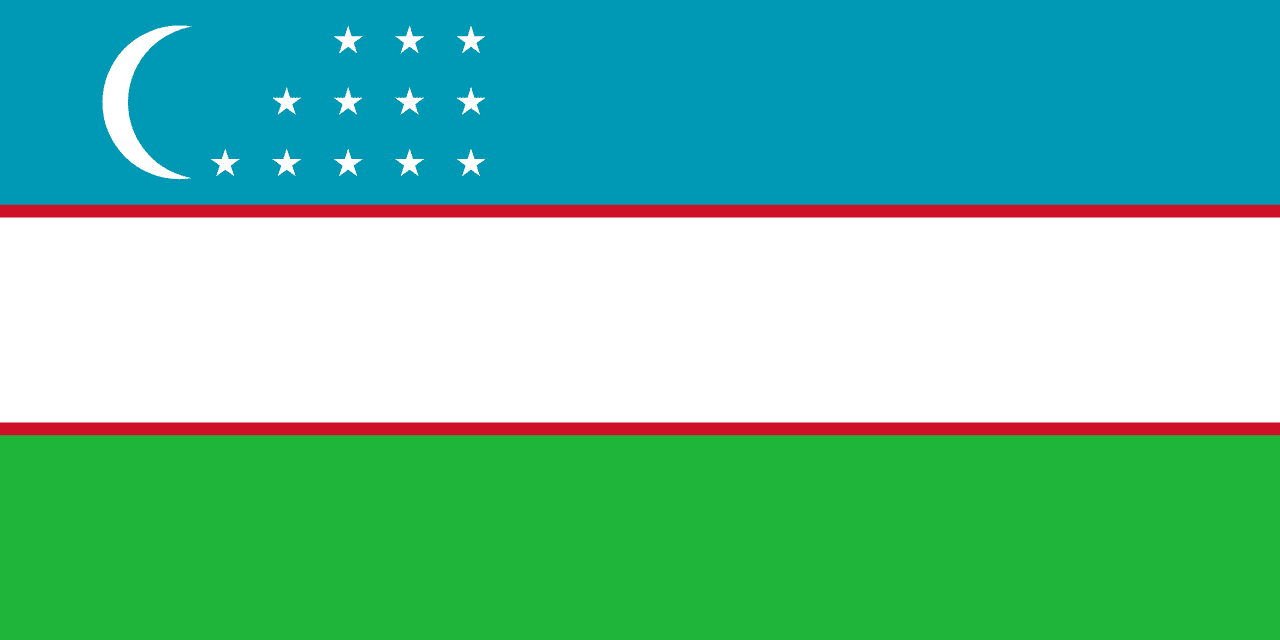The flag of Vanuatu is a striking and symbolic representation of this South Pacific island nation's culture, history, and aspirations. Its unique design features a horizontal Y-shape of black, bordered by yellow, dividing the flag into three distinct sections: a red triangle on the hoist side, and green and black triangles on the fly side. Within the black triangle, a prominent yellow emblem representing a boar's tusk encircling two crossed namele leaves stands out, symbolizing peace and the rich Ni-Vanuatu culture.
Vanuatu information
| National Flag Day | — |
| Sovereign state | Yes |
| Official name | Republic of Vanuatu |
| Capital | Port Vila |
| Population | 243,304 |
| Area | 12,189 km² |
| Currency | Vatu (VUV) |
| Language | Bislama, English, French |
| Continent | Oceania |
| Region | Melanesia |
| Subregion | — |
| Borders | — |
| Timezone | Vanuatu Time (VUT) UTC+11 |
| Calling code | +678 |
| Top-level domain | .vu |
History of the Vanuatu flag
 The flag of Vanuatu was officially adopted on February 13, 1980, coinciding with the country's independence from joint British and French colonial rule, known as the Anglo-French Condominium. This condominium arrangement, sometimes humorously referred to as the "Pandemonium" due to its complex nature, had been in place since 1906.
The flag of Vanuatu was officially adopted on February 13, 1980, coinciding with the country's independence from joint British and French colonial rule, known as the Anglo-French Condominium. This condominium arrangement, sometimes humorously referred to as the "Pandemonium" due to its complex nature, had been in place since 1906.
The design was the result of a competition won by local artist Kalontas Malon, who skillfully incorporated elements representing Vanuatu's diverse heritage and aspirations for the future. The flag's creation was a significant moment in Vanuatu's history, symbolizing the unity of the nation's many islands and cultures under a single, independent identity.
Prior to independence, different flags were used by the Anglo-French Condominium government and various local political movements. The adoption of the current flag marked a clean break from the colonial past and the emergence of Vanuatu as a sovereign nation.
Symbolism and design of the Vanuatu flag
Each element of the Vanuatu flag carries deep symbolic meaning, reflecting the nation's culture, history, and environment:
- The red triangle represents the blood shed during the struggle for independence and the unifying power of Christianity in the nation. Red is also a traditional color in Melanesian culture.
- The green triangle symbolizes the lush, fertile lands of the Vanuatu islands and the nation's agricultural wealth. Agriculture remains a crucial part of Vanuatu's economy and way of life.
- The black represents the Melanesian people, who form the majority of Vanuatu's population. It also symbolizes the rich, volcanic soil of the islands.
- The yellow Y-shape signifies the light of the Gospel spreading through the islands of the Pacific. It also represents the shape of the Vanuatu archipelago.
- The black and yellow colors pay homage to traditional Melanesian designs and art forms.
- The yellow boar's tusk emblem is a symbol of prosperity and power in Vanuatu culture. In traditional society, only the most important men were allowed to wear a boar's tusk.
- The crossed namele leaves represent peace and are used in traditional ceremonies. The namele (Cycas) is a type of palm-like plant native to Vanuatu and holds significant cultural importance.
Usage and significance of the Vanuatu flag
 The flag of Vanuatu is a powerful symbol of national identity and pride. It is prominently displayed during national celebrations, such as Independence Day on July 30th, and at international events where Vanuatu is represented. The flag flies over government buildings, schools, and public institutions throughout the country.
The flag of Vanuatu is a powerful symbol of national identity and pride. It is prominently displayed during national celebrations, such as Independence Day on July 30th, and at international events where Vanuatu is represented. The flag flies over government buildings, schools, and public institutions throughout the country.
In educational settings, the flag is used to teach young Ni-Vanuatu about their country's history, values, and cultural heritage. Its unique design makes it easily recognizable among other national flags, reflecting Vanuatu's distinct place in the global community.
The flag also plays a significant role in Vanuatu's tourism industry, serving as a visual representation of the country's unique culture and natural beauty to visitors from around the world.
Interesting facts about the Vanuatu flag
- Vanuatu is an archipelago of 83 islands in the South Pacific, known for its diverse culture, stunning landscapes, and as the original home of bungee jumping.
- The flag's design reflects not only the country's natural beauty but also its complex cultural heritage, blending Melanesian traditions with colonial influences.
- The yellow boar's tusk emblem is particularly significant in Vanuatu culture, often used in traditional ceremonies and as a symbol of wealth and status.
- The flag's colors - red, green, black, and yellow - are commonly found in traditional Melanesian art and clothing.
- Vanuatu's flag is one of the few national flags to use the color black as a primary color, giving it a distinctive appearance among world flags.
- The Y-shape on the flag is sometimes interpreted as representing the shape of the Vanuatu archipelago, though this is not an official part of the symbolism.
- The flag was designed to be recognizable from both sides, which is important for a nation of islands where flags are often seen from various angles.
